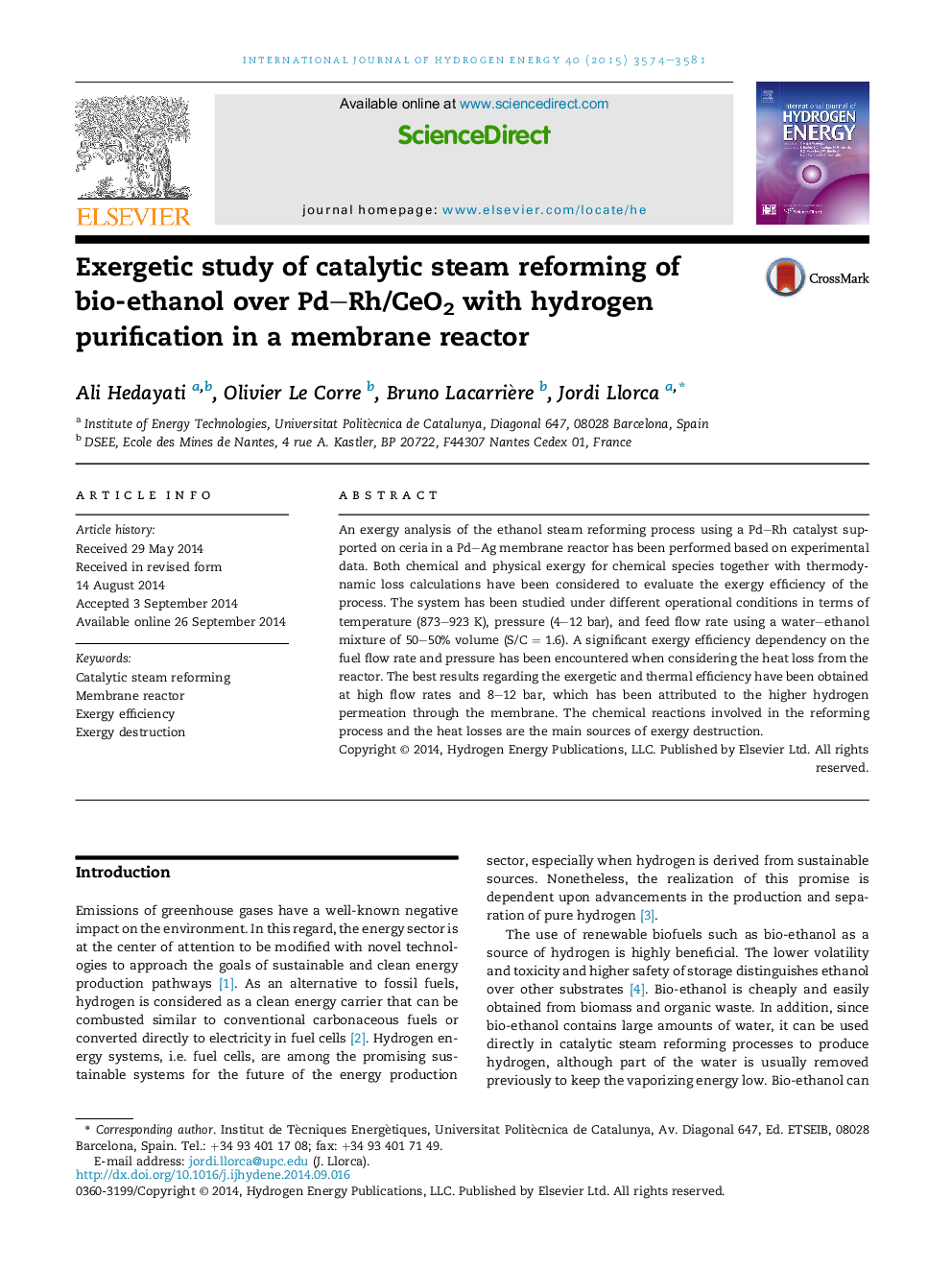| Article ID | Journal | Published Year | Pages | File Type |
|---|---|---|---|---|
| 1272053 | International Journal of Hydrogen Energy | 2015 | 8 Pages |
•Exergy efficiency is a function of fuel flow rate and pressure.•At 12 bar and 923 K the exergy efficiency reaches 26%.•The heat content of the waste gas is enough for auto-thermal operation.•Almost 66% of the exergy is destroyed by chemical reactions and heat losses.•Full insulation of the reactor vessel improves the exergy efficiency by 15–25%.
An exergy analysis of the ethanol steam reforming process using a Pd–Rh catalyst supported on ceria in a Pd–Ag membrane reactor has been performed based on experimental data. Both chemical and physical exergy for chemical species together with thermodynamic loss calculations have been considered to evaluate the exergy efficiency of the process. The system has been studied under different operational conditions in terms of temperature (873–923 K), pressure (4–12 bar), and feed flow rate using a water–ethanol mixture of 50–50% volume (S/C = 1.6). A significant exergy efficiency dependency on the fuel flow rate and pressure has been encountered when considering the heat loss from the reactor. The best results regarding the exergetic and thermal efficiency have been obtained at high flow rates and 8–12 bar, which has been attributed to the higher hydrogen permeation through the membrane. The chemical reactions involved in the reforming process and the heat losses are the main sources of exergy destruction.
